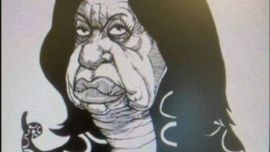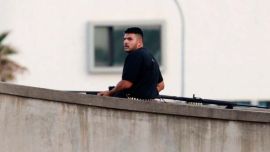Some of the Big Apple’s most important museums – like the Museum of Modern Art (MoMA) or the Guggenheim, centres such as the Rockefeller, or even the city’s emblematic squares – have been taken over by Latin American art this spring. Is it just a coincidence? Or is it overdue recognition of a community that represents 35 percent of New York’s population?
"We are interested in artists and designers who make work that reveals hidden histories," says Su Wu, the curator of an exhibition from Mexican platform MASA, which has taken over the Rockefeller Center for the last month and a half.
Almost a century after the furore surrounding the Hombre en la encrucijada ("Man at the Crossroads)" project by the great muralist Diego Rivera, the Mexican platform is exhibiting for the first time at the Rockefeller and in New York, exploring "the long history of creative and intellectual exchange between Mexico and the United States," Wu explains.
It also "reflects their efforts to present conceptually and emotionally resonant design that transcends geographic boundaries," she adds.
Immigration, indigenous worldviews, feminism and the environment are some of the most recurrent themes of Latino artists based in the United States, such as El Salvador’s Guadalupe Maravilla, who has exhibitions at the Museum of Modern Art (MoMA) and the Brooklyn Museum, or Chilean artist Cecilia Vicuña, who is exhibiting at the Guggenheim.
This can be explained, according to Pablo León de la Barra, the Mexican curator of Latin American painting at the Guggenheim, by the "difficult contexts they come from,” or by the fact that they “are a minority in the United States."
Geographical distribution
For Aimé Iglesias, director and curator of Visual Arts at the Americas Society, this new cultural offering corresponds "to a demographic distribution where the presence of Latinos is increasingly more important" not only in the city, but throughout the country.
The author of a study on the presence of Latin American artists in New York between 1965-1975, many of whom emigrated there to escape the Latin American dictatorships of the time, the Argentine expert says that "there is more and more space for artists from these groups" as museums are "paying more attention" than ever before.
With 62.3 million Latinos in the United States, representing 19 percent of the country's population in 2020, "it's time for institutions to start recognising this and reduce asymmetries in exhibition programming, staffing and power structures," León de la Barra tells AFP.
"It is part of our long-term commitment to show and acquire works by LatinX [US Latino] and Latin American artists, which we have been doing increasingly since 2014," he adds.
In the 1960s, when New York became the new centre of international experimental art, to the detriment of Paris, the presence of Latino artists and their art began to grow.
Both the MoMA and the Guggenheim began to host exhibitions by Latino artists. The latter even had a fellowship programme, from which artists such as the Brazilian Hélio Oiticica, Luis Camnitzer, Marta Minujín, César Paternosto and Alejandro Puente benefitted.
Reaffirmation
New York’s Latin American cultural offering is complemented by sculptures from Mexican artist Geles Cabrera at Americas Society and creations from the "Here" (Aquí) exhibition by Spaniard Santi Flores in the Garment District of New York, created in the midst of confinement due to the pandemic. The latter, in the words of the author, intends to send a message of "reaffirmation,"that "we are still here."
Meanwhile, El Museo del Barrio – the first eminently Latino art institution in New York – proposes a retrospective of its creator, Puerto Rican artist Raphael Montañez Ortíz, a central figure in post-war American art and a key figure in Destructivism.
In September, the Armory Show – New York's international contemporary art fair – will for the first time have a section dedicated to Latino and LatinX art.
New York is one of the world’s most attractive destinations for international and national tourism and the city is recovering its rhythm, two years on from the pandemic. Experts say, however, that the rise of Latino art is not just a phenomenon in the city of skyscrapers – similar scenes can be found in Los Angeles, Miami, Chicago, Houston and Dallas, with a strong migratory presence from south of the Rio Grande.
"I hope it is not a fad, but a sustainable, supportive and permanent work," says Iglesias.
related news
by Ana Fernández, AFP






















Comments